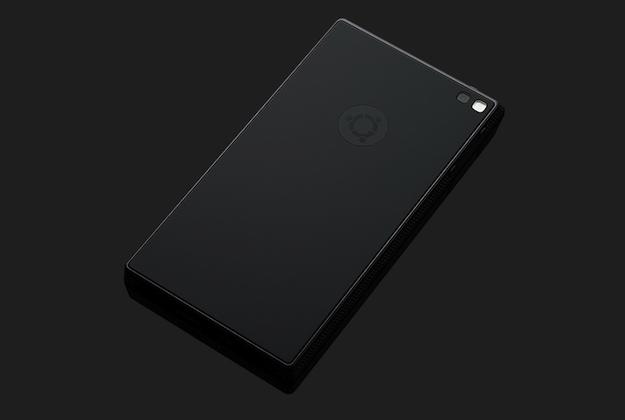
The Ubuntu Edge – the first phone to run Ubuntu Phone, Ubuntu Mobile, or whatever it’s called – has been made official. Well, sort of. Unconventionally, Canonical has put the project up on the Indiegogo crowd funding website for us all to invest our money in. Wow, exciting right? It’s certainly an interesting way of building interest around Ubuntu Phone, and is a step beyond rival Jolla’s pre-order campaign, both in terms of scope and personal financial commitment. So should you put down your hard-earned for an Edge? That depends.
Let’s preface this by saying we love innovation, Ubuntu Phone looks really interesting, and on the face of it, the Edge is an exciting piece of hardware. Except it all sounds like sci-fi fantasy, from the too-good-to-be-true spec of the phone and its mystery manufacturer, to the astonishingly high fundraising target.
Wallets at the ready
If you’re reading this and haven’t already backed the campaign, an Ubuntu Edge is going to cost you $830 minimum, or you could pay $10,000 for one of the first 50 off the production line and a ticket to the launch event. Canonical has set a goal of – wait for it – $32 million. Should it not be met the Edge will remain a twinkle in CEO Mark Shuttleworth’s eye.
Assuming it sells all 50 of the $10,000 options, it’ll need to sell at least another 37,900 basic phone packages to achieve its goal. During its first 24-hours, it raised more than $3 million and sold out of its earlybird specials; a solid start, but it’ll need to match this performance every day for the remaining 30 days if it wants to meet the target. The lack of a $600 option may also hurt it. As a comparison, one of the most popular Kickstarter campaigns so far was for the Pebble smartwatch, which sold about 85,000 units during the campaign. The difference is, the Pebble was up for $115.
Sounds tough, right? It’s because it is, and Canonical knows it. In the FAQ, it says the goal is a balance between the volume needed to make the project viable, and providing capital to use, “Selected parts not yet proven for multi-million-unit production.”
Cutting edge tech

Two of the most intriguing aspects of the Edge – in a Sherlock Holmes way – are its processor and its battery. Apparently, “The fastest multi-core processor,” will be selected for the job, but as it can’t be named, we must assume it’s either a deal in the making, or it doesn’t exist yet. Next is the battery, which will be a, “Silicon anode Li-ion” cell. Using silicon anodes instead of graphite anodes has great potential to improve battery life, but the technology is still in the early stages. Leyden Energy, a firm at the forefront of research into silicon anode batteries, told us consumer level cells wouldn’t be ready until the end of 2014. Canonical says it plans to ship the Edge by May 2014.

Is it really possible?
We’re talking about a prototype phone here, using technology that isn’t available anywhere else. We must approach with trepidation. We’re not saying Canonical is full of hot air, but expectations must be kept in check. For example, who’s building this wonder phone? It’s a good question, and Canonical won’t say. This isn’t a feature phone or a run-of-the-mill, mid-range smartphone, so shouldn’t be entrusted to just anyone; but there’s no mention of who will be building the Ubuntu Edge at all.

The Edge is a real enthusiasts phone, and its specs most definitely read like a fanboy’s wet dream, reminding us of some of the least believable rumors about some future iPhone’s specs. Can Canonical, a company which has never produced a smartphone before, really pull this off?
Willing to take a gamble?
It’s going to come down to you. If you’re on the fence about laying out more than $800 for a phone which doesn’t exist yet, then we’d suggest you don’t watch Mark Shuttleworth’s pitch video. He’s a likable, positive person, and he makes a very convincing case for the Edge, appealing to our easily led inner geek by talking about being able to, “try the latest technologies long before anyone else,” and it being a limited edition production run especially for connoisseurs who want, “ultimate performance” from their smartphones.
If the Edge project is successful, it could be the greatest phone the world has ever seen. Or, if it can’t live up to the hyped up specs, it could become a PR disaster or worse, an I-told-you-so joke. If it fails, then it’ll be the super phone which got away, leaving us with nothing more than a monetary statistic on how uninterested we are in not only hardware from a new brand sold without a two-year contract, but also this year’s new wave of smartphone operating systems in general.
What to do, then? If $830 is pocket change to you, then get over there are put down your cash. There’s nothing to lose and everything to gain. After all, the Edge is never going to be lemon; it runs Android, too. For everyone else who thinks $830 is too much money for a phone, backing the Edge is a huge gamble. We look forward to seeing if it pays off.



